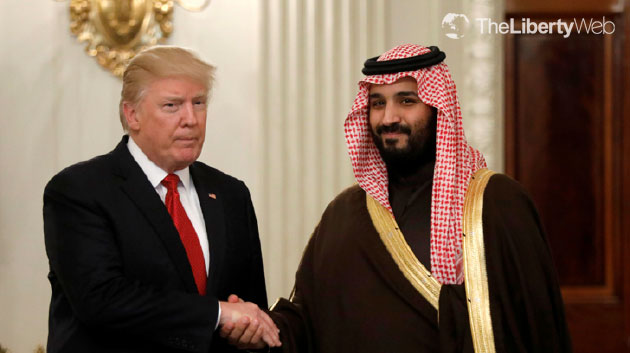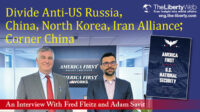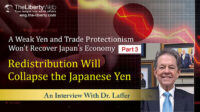War Or Revolution: Which Will Iran Choose?
Japan Must Help Them Modernize
photo:reuters/ Aflo offer:SalamPix/Abaca / Aflo
Iran vs. U.S.-Israel-Saudi Arabia

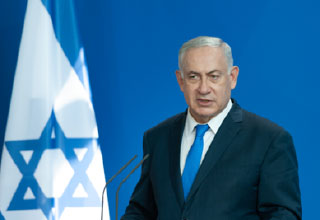
photo:Drop of Light / Shut terstock.com、photocosmos1 / Shut terstock.com offer:Office of the Iranian Supreme Leader /AP/ Aflo
“Iran Was Behind The Saudi Arabian Oil Attacks! Impose Maximum Sanctions!”
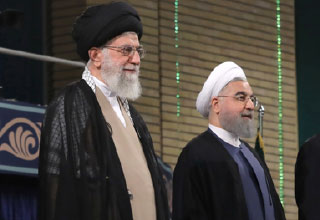
photo:Drop of Light / Shut terstock.com、photocosmos1 / Shut terstock.com offer:Office of the Iranian Supreme Leader /AP/ Aflo
“We Didn’t Attack Saudi Arabian Oil Facilities! Show Us Your Evidence!”
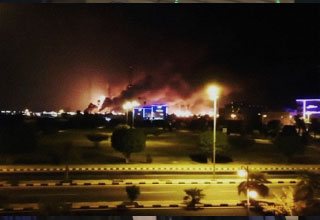
Photograph: Saudi Arabian oil facilities were attacked on 14th September.
Many people may have the impression that Iran is a totalitarian dictatorship like North Korea, but this is a misconception.
The Iranian Revolution of 1979 was a battle for freedom. It freed them from the corrupt puppet monarchy setup by the U.S. It was a conservative revolution that was carried out with the support of the majority of the citizens.
The revolutionary banner was “revival of religion”. They aimed to establish a theocracy to revive religious faith and prevent corruption, in order to create a virtuous society. It is radically different to the anti-religious country of North Korea.
But after the Revolution, Iran placed Islam and combatting Israel at the center of their policy decisions, and the U.S. is not happy about it.
The U.S.-Israel-Saudi Arabia Alliance
President Trump wants to secure votes from 15 million evangelical supporters for the 2020 presidential election. Evangelicals have the firm belief that we must return the Jewish people to the Promised Land in order to witness the Second Coming of Christ.
That’s why Iran, which was founded on anti-Israel values after the revolution, is an enemy to those believers. This is so regardless of whether Iran actually intends to attack Israel or not. In order to protect Israel, the U.S. has strategically formed an alliance with the leading Sunni-Islam country of Saudi Arabia to split them off from Iran (the leading Shia Islam country).
Saudi Arabia Has Less Freedom Than Iran
Saudi Arabia, however, has nowhere near as much freedom as Iran. Iran’s political leaders are chosen by election, including the president. In the presidential election, candidates are given the freedom to debate on the streets. In 1997, the underdog candidate Mohammad Khatami was elected president, proving that the electoral system was not rigged. Also, the Supreme Leader is just a regulator, so he must respect the rights of the elected president.
In contrast, the Saudi Arabian King is not elected by the people, and has little regard for human rights. Last year, the Saudi government was suspected of assassinating Jamal Khashoggi – a journalist who wrote articles that were against the Saudi government – and dismembering and chemically dissolving his body to destroy the evidence. And Saudi Arabia does not speak out against Israel’s infringements upon the Palestinian people, who are Arabs just like the Saudis.
Saudi Arabia’s interpretations of Islamic scriptures are also fundamentalist and archaic, which prevents them from embracing modernization: for example, they still oppress women. In this way Saudi Arabia is dictatorial, but the Trump government continues to deepen relations in a bid to protect Israel.
Members of Congress have spoken out against this decision, but President Trump is adamant about his modern-day crusade.
Revolutions From the Outside Will Fail
If the Trump administration continues doing this it will eventually trigger a third world war in the Middle East. If the military superpowers, the U.S. and Israel, team up, there is a high chance that Iran will fall.
If this happens either Iran will lose the war and embrace modernization, or the same thing may happen that happened after the Iraq War.
In 2003 President George W. Bush sent troops to Iraq in response to the 9/11 attacks. The Hussein regime collapsed, universal suffrage was guaranteed and oil production recommenced. Seen from the outside, it may have looked like a revolution from the outside.
But there were huge losses. The U.S. removed the Ba’ath Party (the Sunni party at the center of the Hussein regime) from public office, but failed at creating a joint Sunni-Shia government. One faction of the Sunni group established the Islamic State and became a global terror threat.
Another huge blow was the outrageous costs of the Iraq War. Economist Joseph E. Stiglitz estimated the costs of the war for the U.S. to be around $3 trillion, which could have been used as a foundation for 3 centuries of social security.
With a population of over 80 million people, Iran is a large country in the Middle East. If it were to collapse, the negative impact on neighboring countries will be more devastating than the impact the Iraq War had.
Huge numbers of refugees will flood into Europe, and it will ignite radical Islam into action. It will make it harder to realize the Trump administration’s vow to withdraw troops from the Middle East.
There is also the danger that China will use the Middle Eastern chaos to advance troops into Taiwan and Okinawa. If this happens, Trump will have to sacrifice Asia in order to win the battle in the Middle East.
A Revolution From the Inside
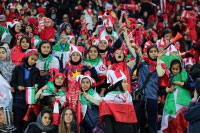


photo:AFP/Aflo Grigvovan / Shut terstock.com
In October, Iran lifted the ban on women watching soccer games. There are many women who can drive, and in the town many young couples can be seen going out on dates. Iran has much more freedom than other Islamic countries.
Perhaps the U.S. vision for Middle Eastern democratization has its origins in their satisfaction with the occupation policy they imposed on Japan just after WWII. It is true that Japan’s defeat in the war galvanized its incredible post-war innovation. But at the same time part of its success was because the idea of democracy had already been flowering during the Taisho era, 1912-1926 (known as Taisho democracy).
A country doesn’t have to lose a war to embrace modernization. During the Meiji Restoration in Japan, the samurais all forfeited the old feudal system and created a new civilization through efforts such as learning English.
Similarly, we see the beginnings of a new age in Iran. In October, the government lifted the ban on women watching soccer games, and the 3500 ‘for women’ tickets were sold out within minutes. There is fierce debate going on for the presidential election, and as Mr. Hachioshi commented, many Iranian people are pro-U.S.
Western media doesn’t mention that Iran has this degree of freedom.
The failure in Iraq shows that revolutions from the outside don’t work unless there are people inside who can carry out political and religious reforms. Iran wants to change, and for this we need reforms that are deeply rooted in history.
In September, Master Ryuho Okawa, founder and CEO of the Happy Science Group, recorded spiritual messages from the guardian spirit of President Rouhani. The guardian spirit said that religious freedom means “the freedom to come closer to the highest God”. If so, Iran is ready to embrace innovation as long as this central idea remains intact.
Master Okawa teaches that, “Even things that are based on religion require a degree of innovation after a few hundred, or perhaps one or two thousand years. We need to control the harmful aspects while thinking carefully about which values have room to grow.”
The people of Iran want to modernize but prefer not to Westernize. Japan was the first country in Asia to embrace modernization, and surely, they can show Iran how a country can modernize without Westernizing.
The West plans to send crusaders to the Middle East. It is Japan’s mission to mediate between the two sides.

